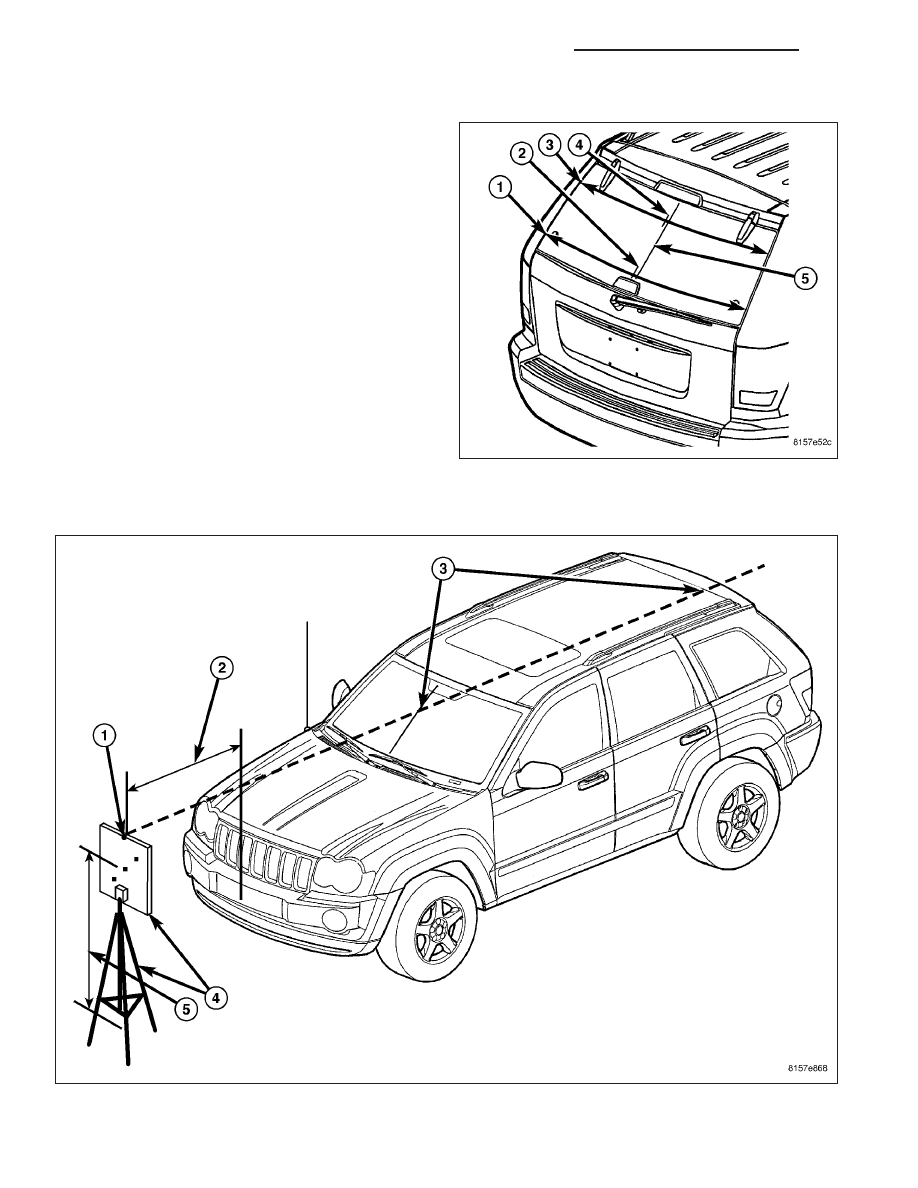Jeep Grand Cherokee WK. Manual - part 450

MARK IMAGER CENTERLINE ON LIFTGATE GLASS
1. Take a measurement (3) across the lower edge of
the liftgate glass hinges using the vertical edges of
the body liftgate opening as the reference points.
2. Divide the upper measurement in half and mark
that dimension on the glass (4) using a grease
pencil. This is the upper centerline of the glass.
3. Take a measurement (1) across the lower edge of
the liftgate glass strut mounts using the vertical
edges of the body liftgate opening as the reference
points.
4. Divide the lower measurement in half and mark
that dimension on the glass (2) using a grease
pencil. This is the lower centerline of the glass.
5. Measure and mark 21 millimeters (0.827 inches)
toward the passenger side of the liftgate glass from
the upper and lower glass centerline marks and
draw a line (5) between these marks. This is the
centerline of the imager.
SET UP AIM BOARD AND TRIPOD
1. Position the vehicle on a level surface in a dimly lit area.
2. Place the aim board and tripod (4) (Special Tool #9649) 127 centimeters (50 inches) ahead of the foremost cen-
ter of the front fascia (2).
8L - 110
LAMPS/LIGHTING - EXTERIOR - SERVICE INFORMATION
WK